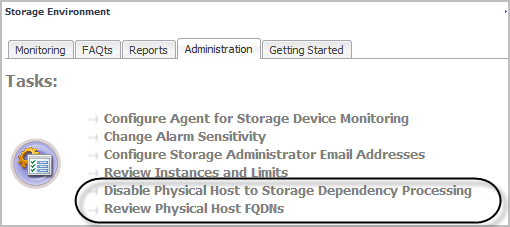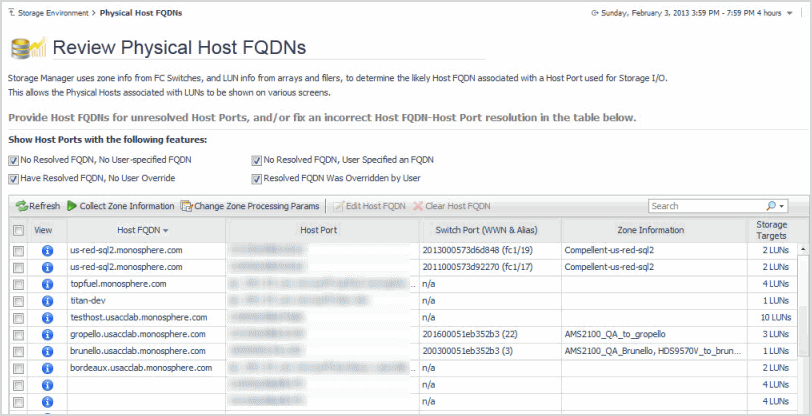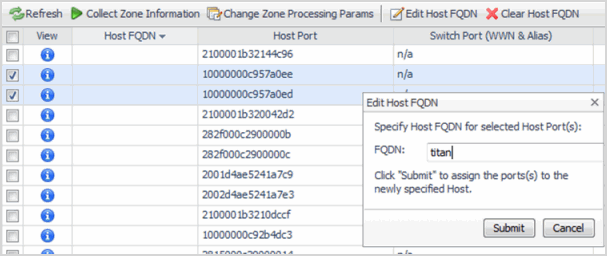Inferring Physical-Host-to-Storage Relationships
In future, if you decide you want to collect data about inferred physical hosts, you can begin monitoring the hosts by configuring Infrastructure agents. For instructions, see Reviewing Inferred Hosts.
Enabling Dependency Processing
|
1 |
|
2 |
Click the Administration tab. |
|
3 |
Click Enable Physical Host to Storage Dependency Processing. |
Reviewing and Editing Host-Port Assignments
|
1 |
|
b |
Click Edit Host FQDN. |
|
3 |
Running Dependency Processing Manually
On the Review Physical Host FQDNs dashboard, use one of the following options:
|
• |
Refresh—Runs the host-resolution analysis to identify inferred hosts for ports handling storage I/O. |
|
• |
Collect Zone Information—Dependency processing automatically collects zone information on a nightly basis. If your environment has changed, use this button to collect updated zone information for FC switches in your environment and run the host-resolution analysis. The collection and analysis can take between five to ten minutes, possibly longer depending on the complexity of the environment. |




